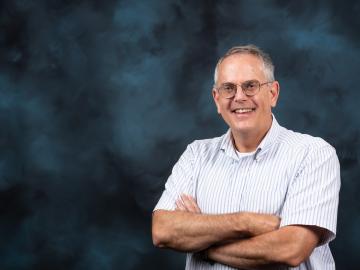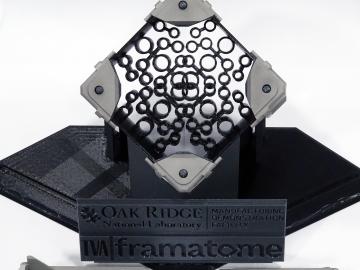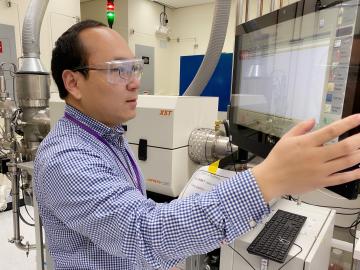
Filter News
Area of Research
- Biological Systems (1)
- Biology and Environment (83)
- Biology and Soft Matter (1)
- Energy Science (35)
- Fusion and Fission (21)
- Fusion Energy (4)
- Isotopes (17)
- Materials (32)
- Materials for Computing (1)
- National Security (10)
- Neutron Science (8)
- Nuclear Science and Technology (18)
- Quantum information Science (1)
- Supercomputing (55)
News Type
News Topics
- (-) Bioenergy (70)
- (-) Composites (12)
- (-) Environment (124)
- (-) Frontier (45)
- (-) Isotopes (35)
- (-) Molten Salt (2)
- (-) Nuclear Energy (71)
- (-) Physics (39)
- (-) Summit (40)
- 3-D Printing/Advanced Manufacturing (60)
- Advanced Reactors (13)
- Artificial Intelligence (79)
- Big Data (50)
- Biology (82)
- Biomedical (44)
- Biotechnology (26)
- Buildings (35)
- Chemical Sciences (37)
- Clean Water (17)
- Computer Science (117)
- Coronavirus (20)
- Critical Materials (6)
- Cybersecurity (14)
- Education (2)
- Emergency (3)
- Energy Storage (37)
- Exascale Computing (51)
- Fossil Energy (6)
- Fusion (40)
- Grid (34)
- High-Performance Computing (82)
- Hydropower (6)
- ITER (4)
- Machine Learning (40)
- Materials (53)
- Materials Science (64)
- Mathematics (9)
- Mercury (7)
- Microelectronics (3)
- Microscopy (27)
- Nanotechnology (21)
- National Security (63)
- Neutron Science (85)
- Partnerships (36)
- Polymers (12)
- Quantum Computing (35)
- Quantum Science (49)
- Security (18)
- Simulation (44)
- Software (1)
- Space Exploration (13)
- Statistics (2)
- Transportation (35)
Media Contacts

Chuck Kessel was still in high school when he saw a scientist hold up a tiny vial of water and say, “This could fuel a house for a whole year.”

There are more than 17 million veterans in the United States, and approximately half rely on the Department of Veterans Affairs for their healthcare.

New capabilities and equipment recently installed at the Department of Energy’s Oak Ridge National Laboratory are bringing a creek right into the lab to advance understanding of mercury pollution and accelerate solutions.

The Transformational Challenge Reactor, or TCR, a microreactor built using 3D printing and other new advanced technologies, could be operational by 2024.

Popular wisdom holds tall, fast-growing trees are best for biomass, but new research by two U.S. Department of Energy national laboratories reveals that is only part of the equation.


Rufus Ritchie came from Kentucky coal country, a region not known for producing physicists.

About 60 years ago, scientists discovered that a certain rare earth metal-hydrogen mixture, yttrium, could be the ideal moderator to go inside small, gas-cooled nuclear reactors.

Radioactive isotopes power some of NASA’s best-known spacecraft. But predicting how radiation emitted from these isotopes might affect nearby materials is tricky


